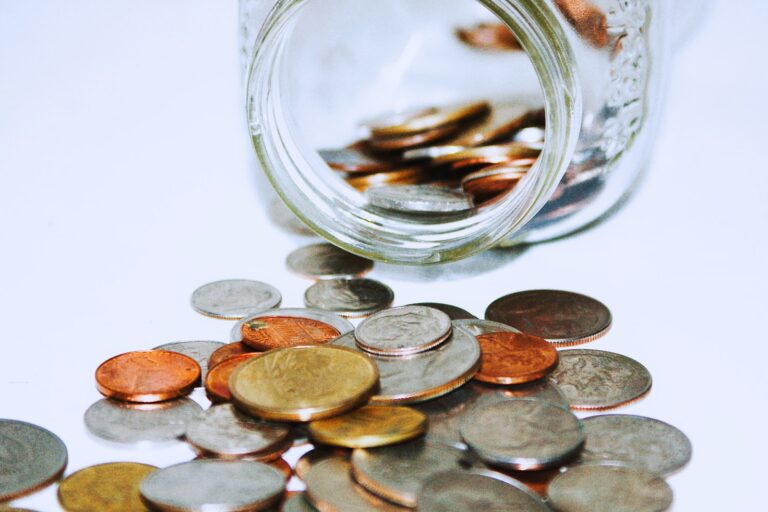7 Simple Money Concepts to Start Introducing to Little Kids
Money is a controversial and hard topic, even for adults. It is also touchy to discuss. However, the earlier money concepts are introduced to kids, the better they will understand them. Let’s face it. It will not be easy to explain the money concepts to little kids, and they won’t understand these concepts overnight. But let’s start by introducing these topics and preparing them for the future.
When to start teaching your kids about money?
According to an article published on CNBC, “children begin to form their lifelong money habits as early as preschool.”
There are many different money concepts you can start introducing to your kids at different ages (as early as three years old). The money concepts for kids at younger ages are much simpler, and these will create a good foundation for them. As they grow, parents can start discussing more complicated concepts and activities. The goal is to prepare our children for a stable and sustainable financial life.
When exactly to start teaching your kids? There are no right (or wrong) answers to this question. You can begin whenever you and your kids are ready. However, please keep in mind that the older your kids are, the more in-depth concepts you can talk about.
7 Simple money concepts for little kids
Coins and bills

The first simple money concept you can start teaching your kids today is that money is represented in different forms: coins and bills. With physical examples in your hands, you can explain to your little kids that coins are made of metal while bills are made of paper and come in different sizes, colors, and values. For example, a quarter is a coin made of metal, and it is silver in color, while a penny is also a coin made of metal but in bronze color.
Counting money
Another fun and easy way to teach money concept is through counting. First, you need to ensure that your little kids know how to count (at least to 20). Then, you can start teaching your kids to count pennies or $1 bills since they are the easiest to explain. You can use real money, monopoly bills, or any types of printable play bills. I personally prefer using real money because I can teach my kids the value of certain things following the counting activity.
However, if you want to start by using play bills and coins, you can download the FREE PRINTABLE BILLS AND COINS today!
Sorting money
Sorting is another easy money concept to start introducing to your little kids. As previously mentioned in the “coins and bills” section, coins and bills have different values. For this activity, reinforce the knowledge of different values to your kids. Then, you can invite your kids to sort out different coins or bills from a mixed pile. Again, I prefer to use real money because it gives a sense of real value.
Saving and piggy banks

There are several ways you can teach your kids about saving. The easiest way is through the introduction of a piggy bank. You can start by explaining to your kids about the saving goals. For example, you can start asking your kids what they like to buy/do in the near future. Then, you can explain to them that filling the piggy bank with coins and bills will help them achieve their goals. The main thing to remember is to keep it simple when introducing the concept of saving to your little kids. You can talk deeper about saving plans and setting priorities as they are a little older.
Paying for services
For your kids to further understand the money concepts, you can explain to them that services cost money. In addition, you can help your kids practice by asking them to pay (hand them the money so that they can pay the service provider) for some services like haircuts or manicures. This will help your kids visualize that they need to give up money in exchange for the services they want to get.
Food and toys cost money
Similar to paying for services, you can ask your kids to pay for food or toys. This will help them understand that food and toys are not free. On a side note, this will help reduce the number of public tantrums your kids throw for new toys. Next time they want a new toy, you can ask them to pay for it (happy parenting!)
Earning money
Depending on the ages of your kids, you can explain this money concept in various ways. The easiest way to start is to let your kids know that we need to work to earn money for food, clothes, and other things. Then, you can start explaining to your kids that they can make money by working. However, it’s important to remember not to train your kids to have a “money only” mindset. You can pay them for specific tasks (like helping with packaging for your small business), but they also need to learn to contribute as a family member (they will not get paid washing dishes or making their beds).
Conclusion
Introducing money concepts to kids at a young age will help them form a good foundation for their financial habits. It might not be easy to teach money concepts to kids, but it is not impossible. Comment to let me know what your favorite money concepts for kids are. Don’t forget to share this article with those you think might benefit.
Ready to teach kids the concept of time as well? Check out our blog post “Concept of Time for Little Kids and 5 Useful Games to Teach Kids to Tell Time.”






